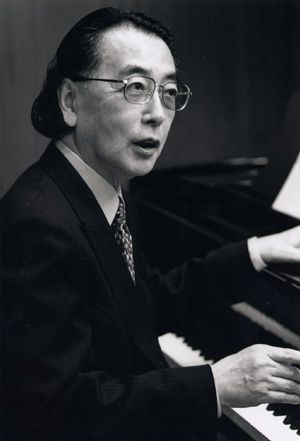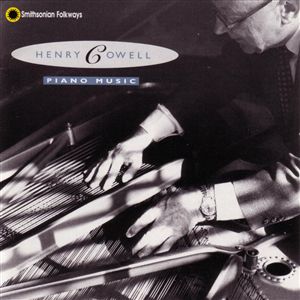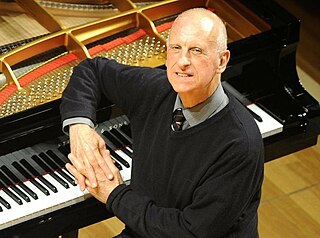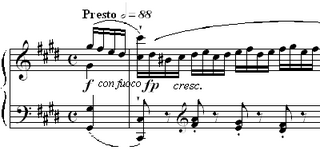
Tōru Takemitsu was a Japanese composer and writer on aesthetics and music theory. Largely self-taught, Takemitsu was admired for the subtle manipulation of instrumental and orchestral timbre. He is known for combining elements of oriental and occidental philosophy and for fusing sound with silence and tradition with innovation.
Earle Brown was an American composer who established his own formal and notational systems. Brown was the creator of "open form," a style of musical construction that has influenced many composers since—notably the downtown New York scene of the 1980s and generations of younger composers.

Toshi Ichiyanagi was a Japanese avant-garde composer and pianist. One of the leading composers in Japan during the postwar era, Ichiyanagi worked in a range of genres, composing Western-style operas and orchestral and chamber works, as well as compositions using traditional Japanese instruments. Ichiyanagi is known for incorporating avant-garde techniques into his works, such as chance music, extended technique, and nontraditional scoring. Ichiyanagi was married to artist Yoko Ono from 1956 to 1962.

The shō (笙) is a Japanese free reed musical instrument descended from the Chinese sheng, of the Tang dynasty era, which was introduced to Japan during the Nara period, although the shō tends to be smaller in size than its contemporary sheng relatives. It consists of 17 slender bamboo pipes, each of which is fitted in its base with a metal free reed. Two of the pipes are silent, although research suggests that they were used in some music during the Heian period. It is speculated that even though the pipes are silent, they were kept as part of the instrument to keep the symmetrical shape.

String piano is a term coined by American composer-theorist Henry Cowell (1897–1965) to collectively describe pianistic extended techniques in which sound is produced by direct manipulation of the strings, instead of or in addition to striking the piano's keys. Pioneered by Cowell in the 1920s, such techniques are now often called upon in the works of avant-garde classical music composers.

Roger Robert Woodward is an Australian classical pianist, composer, conductor, teacher and human rights activist. He is widely regarded as a leading advocate of contemporary music.
Aki Takahashi is a Japanese pianist specializing in contemporary classical music.

Étude Op. 10, No. 4 in C♯ minor, known as the Torrent étude, is a study for solo piano composed by Frédéric Chopin in 1830. It was first published in 1833 in France, Germany, and England as the fourth piece of his Études Op. 10. This study, a very fast Presto con fuoco, features continuous sixteenth notes (semiquavers), in perpetuum mobile fashion involving both hands.
Indeterminacy is a composing approach in which some aspects of a musical work are left open to chance or to the interpreter's free choice. John Cage, a pioneer of indeterminacy, defined it as "the ability of a piece to be performed in substantially different ways".
Herma is a piece for solo piano composed by Iannis Xenakis in 1961. About ten minutes long, it is based on a formulation of the algebraic equations of Boolean algebra, and is also an example of what Xenakis called symbolic music.
November Steps is a musical composition by the Japanese composer Tōru Takemitsu, for the traditional Japanese musical instruments, shakuhachi and biwa, and western orchestra. The work was commissioned by the New York Philharmonic on the occasion of its 125th anniversary, and premiered in November 1967 by the orchestra under the direction of Seiji Ozawa.
Eclipse is a composition for shakuhachi and biwa by Japanese composer Tōru Takemitsu. It was composed in 1966.
A String Around Autumn, sometimes also called the Viola Concerto, is a concerto for viola and orchestra by Japanese composer Toru Takemitsu. It was finished in 1989.

Music for Electric Metronomes is an avant-garde aleatoric composition written in 1960 by Japanese composer Toshi Ichiyanagi for any number of performers between three and eight. The piece involves the manipulation of electric metronomes, followed by various unspecified sounds and actions. It is a very theatrical piece, and reflects Ichiyanagi's affiliation with Fluxus, an experimental art movement from the sixties. The only true scored "instrument" is an electric metronome for each individual player, though the varying sounds and/or actions may involve many different instruments and objects at the discretion of the performer. Because the graphic notation of the score—a series of dashes, lines, and numbers in an erratic pattern of connected paths—leaves room for personal interpretation and expression, each performance is unique, and almost certainly cannot be reproduced. There is no conductor for the performance. It has been recorded on the album Toshi Ichiyanagi: 1960's & 1990's. In a review of a performance by the S.E.M. Ensemble in 1992 at the Paula Cooper Gallery, the music critic of The New York Times, Alex Ross, described the piece as "merely a timid, spastic prelude to György Ligeti's monumental Poème symphonique for 100 metronomes".
But What About the Noise of Crumpling Paper Which He Used to Do in Order to Paint the Series of "Papiers Froissés" Or Tearing Up Paper to Make "Papiers Déchirés?" Arp Was Stimulated by Water, Forests, sometimes shortened as But What About the Noise ..., is a composition for percussion ensemble by American composer John Cage. It was finished in 1985.

Michael Seltenreich is an Israeli composer of contemporary classical music based in New York City. He is known for his distinctive, rhythmically captivating and technically sophisticated music, blending elements of modernism and experimentation. His works have been performed by leading ensembles and orchestras around the world, including the Munich Philharmonic, the Israel Philharmonic Orchestra, the Tokyo Philharmonic Orchestra, and the Juilliard Orchestra. He earned commissions from staple institutions such as Lucerne Festival, Aspen Music Festival, and Santa Fe Chamber Music Festival. Seltenreich was the first Israeli to win the prestigious Toru Takemitsu Composition Award and is a recipient of the Israel Prime Minister Award in Composition. In 2022, he received the Music Award from the American Academy of Arts and Letters.
Eros Piano is a piano concerto written by the American minimalist composer John Adams. The work was commissioned by the Koussevitzky Music Foundation in 1984 and was completed in 1989. Its world premiere was performed by the pianist Paul Crossley and the London Sinfonietta conducted by Adams on November 24, 1989, in Queen Elizabeth Hall, London. The piece is dedicated to Paul Crossley. It is the first of three piano concertos by Adams, followed by Century Rolls in 1996 and Must the Devil Have All the Good Tunes? in 2019.
Group Ongaku was a Japanese noise music and sound art collective exploring musical improvisation, composed of six composers, including Takehisa Kosugi, Mieko Shiomi, Yasunao Tone. Ongaku in their group name means "music." The group began their activities in Tokyo in 1958, mainly as a students group at the Tokyo National University of Fine Arts and Music. In 1960, they formalized the group by naming it Group Ongaku and continued until 1962. Their music freely crossed from orchestral to ethnic instruments, technology, and daily objects, melting sound production from devices associated with vastly different forms of sonic practices. In addition, they strategized to expand the musical experience in an attempt to merge the act of composition and that of performance. They shifted their focus from just creating sounds to deploying actions as music. From 1961 onwards, they came into contact with Fluxus coordinator George Maciunas and some members became affiliated with Fluxus. The Japanese Fluxus contingency, centering on them, expanded and Tone called this loose collection of people "Tokyo Fluxus."








